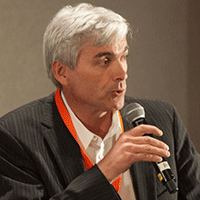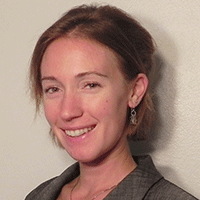June 17, 2020
12:45pm – 1:30pm
Workshop: Sub-interval Distribution Rather than Steady-State Assumption in HOMER Time- Series Simulation of Solar Photovoltaic Systems for Improved Estimates of Phenomenon of Interest to Grid Integration
Panelists: Andy Walker, Jal Desai, National Renewable Laboratories, Steffi Klawite, HOMER Energy, a UL company
Abstract: Most time-series simulations (such as of photovoltaic system performance) involve the “quasi-steady state” assumption of values being constant over a time-step (e.g. 1 hour). This assumption tends to underestimate phenomenon of interest to energy system integration that occur within the duration of a time-step. Other researchers are addressing this problem by high-resolution time series data (e.g. 1-minute). In this presentation we consider the alternative approach of considering a range of values within the time-step represented as a distribution function. The novel distribution function is derived just for this purpose, and represents a maximum value, a minimum value, and a shape to the curve within each time-step. Scalar integrals are then used to calculate quantities of interest to grid integration such as inverter clipping, sell-back of excess power to a utility; through-put of energy in and out of a battery within a time-step; and hosting capacity of a network (maximum power). Derivation of the method will be presented and commercialization of the invention with HOMER Energy LLC will be demonstrated.
Biographies:

Andy Walker is a Senior Research Fellow at the National Renewable Energy Laboratory, where he conducts engineering and economic analysis of energy efficiency and renewable energy projects for Federal agencies such as national parks and military bases and also for commercial and industrial clients. He has led photovoltaics training and certification efforts in Ghana and Tanzania and has experience with off-grid PV/battery/generator installations for applications such as cell phone sites. His patent on the Renewable Energy Optimization (REO) method of planning renewable energy projects across a portfolio of properties based on economic value was awarded the Thomas A. Edison Patent Award in 2015 based on innovation and impact. He has taught at the University of Colorado at Boulder, Colorado School of Mines, and at Metropolitan State University of Denver. He has led the Solar Energy Division of the American Society of Mechanical Engineers and is an ASME Fellow. Dr. Walker is the author of over 28 book chapters, journal articles, and conference papers including “Solar Energy: Technologies and Project Delivery for Buildings,” a reference book published by John Wiley and Sons; and “Sustainable Energy Technologies,” by CRC Press. Dr. Walker’s credentials include a B.S., M.S., and Ph.D. in Mechanical Engineering from Colorado State University, and he is a registered Professional Engineer in the State of Colorado.

Jal Desai is a member of the Modeling and Analysis Group in the Integrated Application Center (IAC) at the National Renewable Energy Laboratory (NREL). Jal Desai holds MS in Energy Science Technology and Policy from Carnegie Mellon University, Pittsburgh, PA and BS from Nirma University of Technology, India. At NREL, he has been involved in performing energy assessments, renewable energy screenings, energy, planning, and life cycle economic analysis. He has also been involved in grid modeling and optimization and electric vehicle feasibility assessments. He has developed keen interest and expertise in the PV operations and maintenance (O&M) domain.

Steffi Klawiter has worked for HOMER Energy since 2016 and, as Product Manager, enjoys listening to and understanding customers from around the world as they consider and develop renewable energy projects. With a Masters in Renewable Energy Management from the University of Freiburg (Germany) and an undergraduate degree in Physics-Astronomy, Steffi applies her experience with renewable energy systems to the HOMER world, particularly in the areas of feasibility analysis and modeling distributed generation. Working at HOMER Energy by UL continues to inspire her interests in distributed energy, microgrids, and solar energy on the international level.